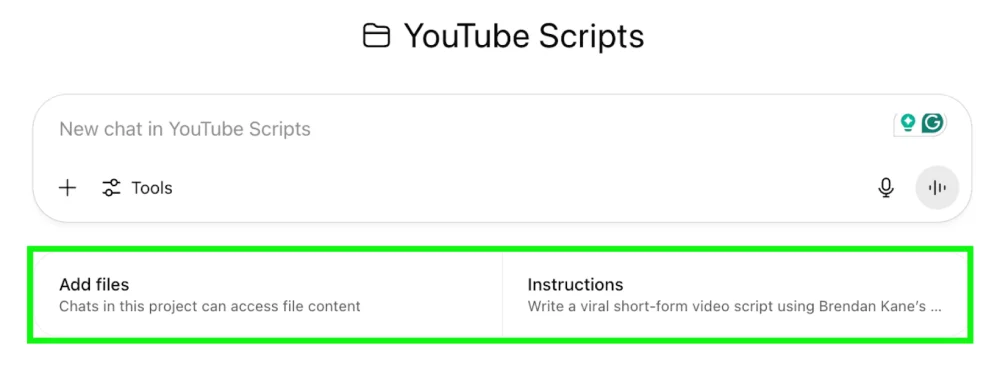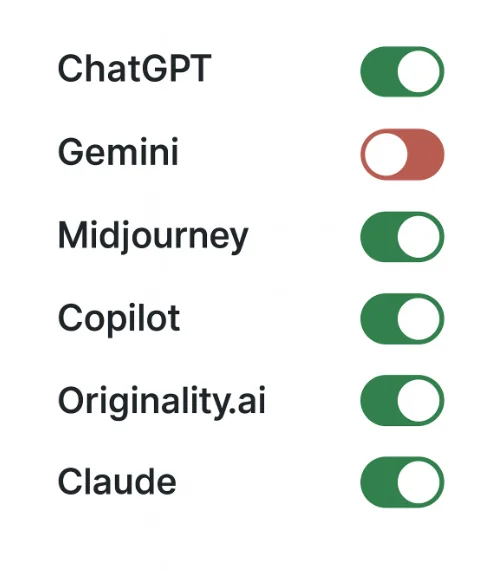What are the Top Challenges of Using Artificial Intelligence in Business?


Top Challenges of using AI in Business
Table of Contents
Serious about growing your business? Let’s plan exactly how to get you more leads, sales, and results—faster.
AI promised speed, scale, and efficiency, but many businesses are seeing the opposite.
More content, more tools, more confusion… and no real growth. Instead of accelerating success, AI is diluting brand identity and overwhelming teams with scattered efforts.
The issue isn’t AI itself; it’s the way it’s being used. Without a clear strategy, focused ownership, and smart integration, even the best tools become distractions. Automation is powerful but only when it’s aligned with real goals, not just trends.
In this article, we’ll unpack all the biggest challenges businesses face with AI today and show you exactly how to fix them.
So, let’s get started!
Marketing Research & Strategy
We help you understand your market and build smart strategies to attract more customers and grow faster.
- Detailed research into your competitors, customers, and market
- Custom marketing and growth plans that drive real results
- Clear action steps to increase traffic, leads, and sales

ADWORDS ROI
Cut Ad spend

What are the Biggest Challenges Businesses Face with AI?
AI is expected to boost the global economy by $15.7 trillion by 2030, according to PwC. And 99% of the business owners have already started using AI to a larger level in 2025. From healthcare to finance and telecom, AI is reshaping every industry.
But here are the biggest challenges that every business owner using AI struggles with:
1. Your Brand Voice Sounds Generic
AI makes content faster, but that doesn’t mean it makes it better. Many founders find their AI-generated emails, product pages, or social content sounding robotic, inconsistent, or worse, just like everyone else.
This hurts credibility, trust, and conversion.
How to fix it:
1. Document your brand voice, and train AI to use it
To maintain a strong and consistent brand voice, start by crafting a one-page Brand Voice Guide that defines your tone (e.g., friendly or formal), vocabulary (preferred terms and what to avoid), sentence style (short and punchy vs. long and descriptive), messaging do’s and don’ts (with clear examples), and audience sensitivity (cultural and emotional context).
Keep it clean and visual for easy reference. Once ready, embed the guide into your AI tools to ensure alignment.
You can also leverage ChatGPT’s “New Project” feature. Here you simply need to add all the details in instructions to get a desired outcome.

2. Write better prompts with a real audience and product insight
- Schedule Your Strategy Session
- Book a 30-Min Call With an Expert
- Lock In Your Growth Call
- Let’s Map Your Gameplan
The quality of your prompt can make or break your output. A weak prompt gives you generic results. But a strong prompt? That’s where the real value lies.
Poor prompt example:
“Write a blog about real estate marketing.”
This is vague. You’ll likely get a surface-level, cookie-cutter post that sounds like everyone else.
Expert-level prompt example:
“Write a 1,000-word blog post targeting real estate business owners earning £1M–£5M annually. Focus on advanced social proof strategies (testimonials, video case studies, Google reviews) that help increase client trust and conversion rates. Use a professional yet conversational tone, and include at least 3 actionable tips and real-world examples.”
Now that gives the AI context, direction, tone, and purpose leading to output that’s actually useful.
2. Your AI Outputs Are Risky and Inconsistent
Poorly reviewed AI content can cause reputational damage, legal issues, or brand confusion. If no one’s reviewing output and you’re using AI to move fast you might also be publishing wrong or misleading information.
How to fix it:
1. Set up a human QA and compliance check process
Have a second set of eyes on anything AI touches, especially public-facing content, investor material, or legal disclaimers. Assign responsibility, don’t leave it to chance.
2. Refine AI outputs with human insights
Yes, it’s absolutely true that AI can help you get things done faster. But if you want results that actually give you more leads, stronger trust, better conversions, then your insight matters.
You need to bring what AI can’t: your deep understanding of the product, the real problems your customers face, and your firsthand experience running the business.
Highlight real stories. Share customer wins. Use visuals that feel personal and true to your brand. That’s how you build real connection and lasting results.
3. You’ve Adopted Too Many Tools (and Broken Your Workflow)
This is the scenario with most of the businesses right now.
You added three AI tools this quarter; your COO added two more. Now your team is toggling between dashboards, and no one knows which tool to use for what.
Instead of productivity, you’re getting platform fatigue.
How to fix it:
1. Audit and eliminate redundant or underused AI tools
List every AI tool your team uses. What’s its purpose? Who uses it? Is it delivering ROI? Cut what’s not essential.

2. Design workflows first, then plug in tools strategically
Map out your ideal process for things like lead gen, product launches, or customer support. Then see where AI can reduce friction, not the other way around.
3. Assign internal tool owners and document best practices
Every tool should have an “owner” responsible for training, documentation, and ROI evaluation. Create a shared AI playbook across departments.
Read More: How to Rank #1 on AI Search Engines (with these few simple strategies)
4. You’re Automating the Wrong Things
AI is meant to save time, but many businesses automate what’s easiest, not what’s impactful. That leads to wasted effort and missed upside.
How to fix it:
1. Run a time vs. impact audit
Ask your leadership team: What tasks eat up time but drive low value? Where do bottlenecks slow us down? List them. Prioritise AI there first.
2. Start with low-risk, and Standardise prompts
Start with easy, low-risk tasks to help your team get used to AI.
Tasks like summarising meeting notes, drafting email responses, or writing job descriptions are perfect entry points. They help your team get comfortable with the tools before applying them to more complex operations.
Once you’ve built that momentum, take it a step further by standardising prompts for recurring tasks, sales outreach, social media updates, investor reports, and more.
For example, in our YouTube process, we use one clear prompt for every script. When our message needs to change, we just update that prompt, not the whole script creation process.
This saves time, keeps your team on the same page, and reduces stress.
Digital Marketing, SEO & PPC
- SEO to boost rankings and capture high-intent, AI-driven traffic
- Performance Marketing to run ROI-focused campaigns that convert
- Content Marketing to drive clicks, earn links, and build authority

5. AI Isn’t Fueling Real Growth
If AI is just making your blog posts faster or emails prettier but not impacting revenue, pipeline, or strategy, it’s not pulling its weight.
How to fix it:
1. Use AI for market research, then build your own strategy
AI can dramatically cut down the time it takes to research your market. Use it to:
- Analyse your top 5 competitors (their messaging, offers, tone of voice)
- Identify what your target audience is actually searching for
- Summarise 1,000+ customer reviews in seconds to find common pain points
- Spot content gaps in your industry
- Track pricing, features, and positioning patterns across your niche
But here’s the key: don’t just copy what the data shows. Use those insights to differentiate. Then, build strategies around those differentiators. Layer in your unique knowledge, personal experience, and market intuition to fill the gaps others have missed.
That’s how you stop playing catch-up and start owning a stronger, smarter position in your market.
2. Involve AI earlier in brainstorming, planning, and positioning
As I mentioned above, use AI for all types of market research. Don’t wait until execution. Use AI as a partner during idea development, brand pivots, or GTM strategy. Its value increases when used upstream, not just downstream.
6. You’re Falling Behind Emerging AI Trends
AI changes monthly. Your competitors are testing GenAI agents, auto-tagging pipelines, and multimodal search, and your team’s still on ChatGPT 3.5. Founders who don’t keep up risk being disrupted. Therefore, it’s high time to answer “how to keep up with emerging AI trends?”
How to fix it:
1. Follow Trusted Sources
Ignore the noise. Pick focused, founder-relevant AI newsletters or podcasts.
Here are a few sources which I personally feel are great in terms of getting the latest AI updates.
You can also subscribe to certain podcasts on the same.
Now that you understand the biggest challenges of using AI in business, and how to fix them, it’s time to take the next step.
At Credofy, a top-rated digital agency on PPH, we’ve helped over 2,500 businesses grow their revenue and conversions over the last 12 years. Whether you’re struggling to get seen in Google’s AI-generated overviews or want to scale smarter using AI, our experts are here to guide you.
Book Your Free 1-hr Discovery Session Now!
Marketing Research & Strategy
We help you understand your market and build smart strategies to attract more customers and grow faster.
- Detailed research into your competitors, customers, and market
- Custom marketing and growth plans that drive real results
- Clear action steps to increase traffic, leads, and sales

ADWORDS ROI
Cut Ad spend

Frequently Asked Questions (FAQs)
Why does my AI-generated output sound generic or off-brand?
Absolutely, it will, because you haven’t trained AI. AI can only reflect what you give it. Without a clear brand voice guide, it defaults to generic language that may weaken trust and impact conversions. Fix it by simply creating a one-page voice guide (tone, vocabulary, structure), train your AI with it, and use tools like ChatGPT “Projects” to centralise assets and prompts.
What problems do companies face while using AI?
- Brand voice sounds generic
- Inconsistent outputs
- Adopting too many AI tools
- Automating the wrong things
- No real growth
- Falling behind emerging AI trends
- Regulation and compliance
- Updating legacy software
- Shortage of specialist AI talent
- Data management
- Managing customer expectations
- Workforce impact
- Crafting an AI strategy with ROI
- Risk management and Shadow AI
Can I automate everything with AI from the start?
No, and you shouldn’t. Jumping into complex automation can create confusion or waste. Fix it: Start small. Automate simple, repeatable tasks first. Then build prompt templates for high-impact use cases like sales, social, and hiring.
What are some tools to check AI-generated content?
Here are some top AI detection tools:
- Originality.ai
- Quillbot AI Detector
- Copyleaks
- GPTZero
- Scribbr AI Detector
- Writer AI Detector
- ZeroGPT
- Grammarly AI Detector
- Small SEO Tools AI Detector
- Sapling AI Detector
Can I rely on AI to produce high-quality work without edits?
No. AI gives you speed, not depth. It lacks real-world experience and emotional context. You need to always add your insights, like the case studies, pain points, product knowledge, and refine tone with humanisation tools.
Why is regulation such a major challenge in AI adoption?
AI is advancing faster than legislation. Governments and businesses are struggling to create and comply with frameworks that ensure AI systems are ethical, unbiased, and legally sound. Navigating this evolving landscape is both complex and critical.
How does poor data management affect AI performance?
AI models need clean, well-structured, and diverse data to perform accurately and fairly. Without proper data management, businesses risk biased predictions, compliance issues, and reduced model effectiveness.
What are customers concerned about when it comes to AI?
Many customers remain sceptical about AI. Studies show a significant number may avoid companies that use AI, especially in sensitive areas like insurance. To build trust, companies must be transparent, ethical, and clear about AI’s role in their services.
How do you create an AI strategy with strong ROI?
An effective AI strategy aligns with clear business use cases, leverages quality data, and plans for long-term value. Success depends on accurate models, infrastructure readiness, and continuous optimisation, not just quick wins.
What is Shadow AI and why is it risky?
Shadow AI refers to employees using unauthorised AI tools within a company. While well-intentioned, it can lead to compliance violations, security risks, and unregulated decision-making. Organisations should establish clear AI usage policies and controls.
Let’s Wrap it Up!
AI Isn’t the Shortcut, It’s the Amplifier
Actually, AI isn’t your savior. It won’t fix a broken strategy, unclear messaging, or disconnected teams.
But used the right way? It can amplify everything you’re already good at.
This blog wasn’t just about tools or tactics. It was about regaining control. About making sure you’re leading your AI, not the other way around.
You have the chance to make AI your leverage, not your liability.
So, now’s the time to ask yourself:
Are you just using AI to look busy?
Or are you using it to build a business that actually grows?




